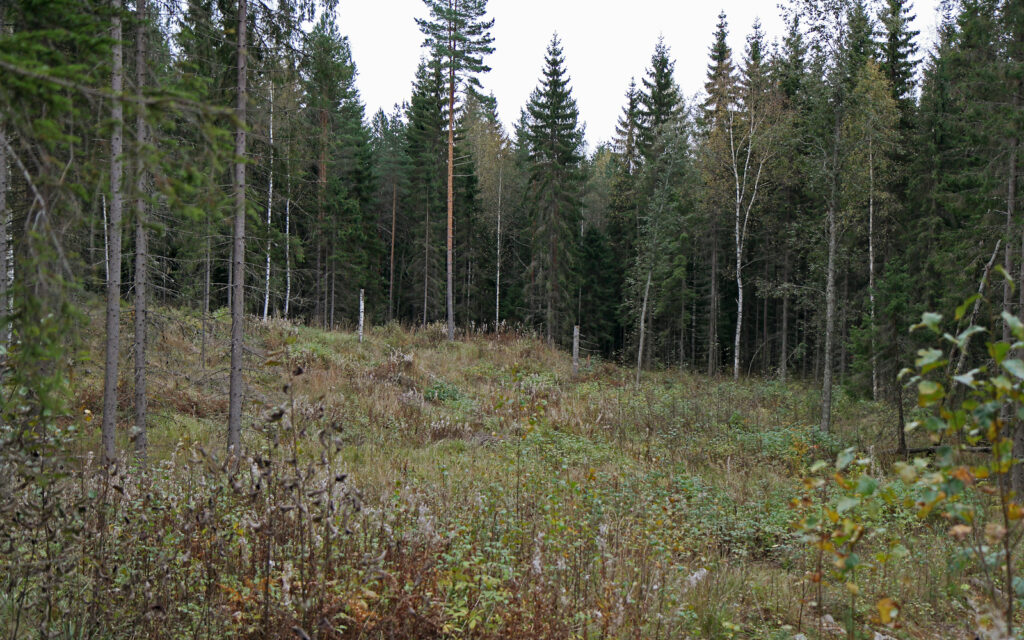Continuous cover or not – profitability always depends upon the case

When it comes to profitability of forestry methods, a definitive answer on the superiority of methods is impossible to give, as is shown by a recent study. The result always depends on the characteristics of each forest compartment – and the needs of the forest owner.
Research cannot provide an overall picture of which of the two competing methods, uneven-aged or even-aged forestry, is more profitable, as is shown by a recent study by the Pellervo Economic Research Institute PTT. Several dozen existing studies were evaluated, and more than 40 of them presented an opinion on the profitability of the methods. However, the figures show that taken as a whole, research does not favour one or the other of the methods.
The reasons for this may be found in the studies themselves: their objectives and set-ups vary greatly. Some of them focus on literature, some on statistical data and others on field experiments. Some were follow-up studies, while others were based on simulations.
The principles of evaluating profitability varied. Some were based on a long-term optimisation of a forest compartment, while others evaluated forestry activities defined in advance or consisted of short-term field experiments combined with predictions of long-term development.
A universally applicable answer cannot be found
It may be asked whether it is at all possible to find an answer to cover all cases.
In Finland, the most obvious situation in which to compare the methods is when a forest owner thinks about moving from traditional even-aged forestry to the uneven-aged method. They are more likely to think of this in terms of a single forest compartment and not for their whole forest property at once.
Compartments differ from each other as regards microclimate and eutrophication. The choice of method is also very much affected by the growing stock of each site.
If there are plenty of trees of different ages and sizes in the compartment, the move would be more sensible than with trees of uniform age and size or with very few trees. This also affects the length of the transition period, something that studies generally overlook completely.
You cannot convert to uneven-aged forestry overnight. The transition period may be very long, sometimes even 25–30 years. It is possible to gain harvesting revenues during that time, too, but the transition period should be borne in mind when evaluating the future profitability of forestry.
Forests are only one element in the owner’s economy
Research usually evaluates profitability theoretically. It is obvious, however, that very few forest owners evaluate the profitability of future forestry activities by converting the value of future net revenue into current monetary value.
Owners are more likely simply to consider their future need of money. Especially if the state of the economy is uncertain, people tend to look after their cash flow.
What is more, the need for money is not based on forestry alone, although this is what is normally assumed in research. The owner may carry on agriculture, quite definitely has a household to look after, and possibly other kinds of investments or enterprises, maybe even aged parents or children to support.
It is often claimed that uneven-aged forestry gives a stabler flow of income because it allows logging revenues to be gained every 10–20 years. However, looking at the forest holding as a whole, the income is more continuous than this regardless of method.
An average example would be a 30-hectare family forest holding and an area of regeneration logging of 1.2 hectares in southern Finland. For such a holding, regeneration loggings alone would provide income every three years, if the rotation period is 75 years.
Risks are seldom considered
The majority of forest owners look to their forests not only for timber revenue, but also for other values. Instead of the open vistas created with harvesting, they may want a continuous forest cover. Even with uneven-aged forestry, this means that they need to decrease their loggings, which will affect both productivity and natural regeneration adversely.
Thus, the forest cover in an uneven-aged forest may not be all that continuous, if the forest owner strives for maximum profitability.
As regards forest biodiversity, uneven-aged forestry may be slightly superior, though not necessarily so. If you want to have decayed wood in the forest, you need to leave retention trees regardless of method.
The risks inherent in even-aged forestry are well known in Finland. Nevertheless, there are risks in uneven-aged forestry as well, most of all the risk of root rot (Heterobasidion annosum), which is why the harvesting of spruce stands must be carried out during the winter season, which is getting shorter and shorter due to climate change, for example.
The shorter season may increase harvesting costs, which in turn decreases the revenue for the forest owner. A similar effect may result from the great variation in the quality of uneven-aged spruce as well as of the sawn timber produced from it, as the variation increases the need to sort the timber and the sawn products in forest and at the sawmill (see here).
The study was carried out by the Pellervo Economic Research Institute PTT in collaboration with the Finnish Forest Association. The project was financed by the Finnish Forest Foundation.
Kirjoita kommentti